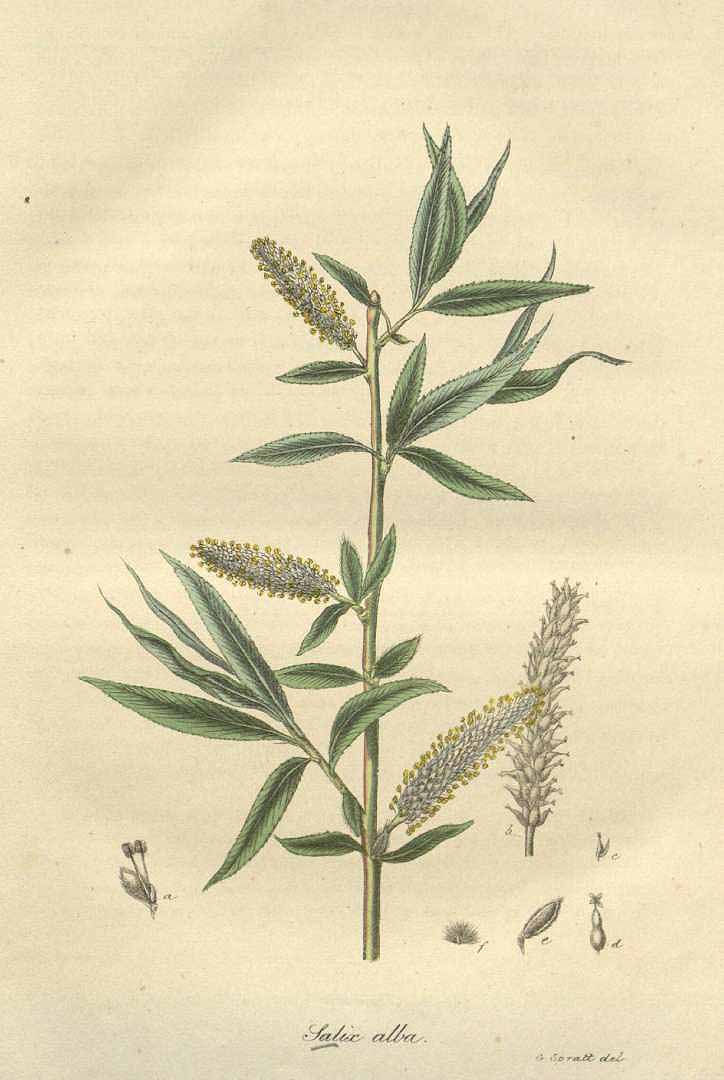WILLOW
- Dave

- Mar 30, 2023
- 4 min read
Updated: Apr 8
Willow

Botanical Name
Salix alba
Common Name
Willow, white willow, common European willow, duck-willow, Huntington willow
Family
Salicaceae
Parts Used
Bark, leaves, roots
Native To
Europe, central Asia, and northern Africa
Harvesting Guidelines
Willow bark is best harvested in the spring when the tree's sap is flowing and leaf buds are forming. While willows typically grow near water, those in drier environments tend to have higher levels of salicin, the active compound responsible for its medicinal properties. To harvest willow without damaging the tree, use healthy branches that are 1-3 inches in diameter and practice coppicing. This method allows for the regrowth of the tree and ensures sustainable harvesting for future use.
The willow tree has been a powerful symbol in many cultures, representing duality, both as a protector and a keeper of secrets. Willow was believed to possess strong spiritual properties, often associated with the feminine and the moon. In ancient Celtic traditions, the willow was sacred to the goddess Hecate, who ruled over magic, witchcraft, and the underworld. The willow’s long, flexible branches symbolized the ability to bend without breaking, making it a symbol of resilience.
In European folklore, knocking on a willow tree's trunk was believed to ward off bad luck, and this practice may have even inspired the modern-day phrase, “knock on wood.” Some believed that the willow’s bark could be used in magical rituals to bind enemies or remove curses.
Willow is also strongly linked to love magic and protection spells in many cultures. For example, in some traditions, willow branches were used to weave protective charms or placed in the home to ward off evil spirits. The tree's connection to water also made it an important part of purification rituals in various indigenous cultures.
Historical & Cultural Significance
Willow bark has been used in herbal medicine for thousands of years. The ancient Greeks were among the first to document the use of willow for its medicinal properties. Dioscorides, a renowned Greek physician, recommended a mixture of mashed willow leaves and black pepper for alleviating lower back pain when consumed with wine. The ancient Egyptians also utilized willow bark as a pain reliever and to treat fevers.
In Ayurvedic medicine, willow has been used for centuries to treat a wide range of ailments, including fevers, headaches, rheumatism, and gout. It was often paired with other herbs to enhance its medicinal properties.
Medicinal Benefits
Willow bark is most well-known for its analgesic (pain-relieving) and anti-inflammatory properties. The active ingredient, salicin, is a precursor to the modern drug aspirin, and has been shown to effectively reduce pain and fever. Studies have demonstrated willow bark's efficacy in treating osteoarthritis, with patients experiencing significant reductions in pain and inflammation.
Willow’s medicinal value extends beyond its pain-relieving effects. It also has antioxidant properties, helping to protect cells from oxidative damage. Furthermore, it has been used to support liver health and as a digestive tonic.
Scientific Studies
In a 2010 study, patients with osteoarthritis who took willow bark extracts reported a significant reduction in pain compared to those on a placebo. The study confirmed the plant’s effectiveness, even in the face of modern pharmaceutical options such as aspirin. Research continues to investigate willow bark's potential as a natural alternative to synthetic medications for pain management and inflammation (Schmid et al., 2010).
Adult Dose
Dried bark/decoction: 3-9 g/day, 1-2 tsp dried bark in 8 fl oz water, 3x/day
Tincture: 15-24 mL (1:5) per day, 3-6 mL (1:5, 25%) 3x/day
Safety:
Willow bark, although natural, should be used with caution. Allergic reactions to willow bark can occur in some individuals, particularly those who are sensitive to salicylates (aspirin-like compounds). It should not be used by those with gallstones or certain stomach issues, such as hyperacidity. Like aspirin, willow bark should not be used by children with fevers or viral infections due to the risk of Reye's syndrome. It’s always advisable to consult with a healthcare provider before using willow bark, especially if pregnant, nursing, or taking medications such as blood thinners.
Actions
Analgesic,Antiinflammatory,Antirheumatic,Antioxidant,Antipyretic,Antiseptic,Astringent,Febrifuge,Immunosupportive
Energy
Cooling
References:
Foster, S., & Johnson, R.L. (2006). Desk reference to nature’s medicine. Washington, DC: National Geographic Society.
Khare, C.P. (Ed.). (2004). Indian herbal remedies: Rational Western therapy, ayurvedic, and other traditional usage, botany. Heidelberg, Germany: Springer-Verlag.
Spinella, M. (2012). Concise handbook of psychoactive herbs: Medicinal herbs for treating psychological and neurological problems. New York, NY: Routledge.
Schmid, B., Tschirdewahn, B., Kötter, I., Guenaydin, I., Luedtke, R., Selbman, H.K., … Heide, L. (2010). Analgesic effects of willow bark extract in osteoarthritis: Results of a clinical double-blind trial. Focus on Alternative and Complementary Therapies, 3, 186. https://doi.org/10.1111/j.2042-7166.1998.tb00927.x
Hoffmann, D. (2003). Medical Herbalism: The science and practice of herbal medicine. Rochester, VT: Healing Arts Press.
tags:
Herbal medicine course
herbal school
wildpluk cursus
kruiden opleiding
geneeskrachtige planten
herborist
become a herbalist








